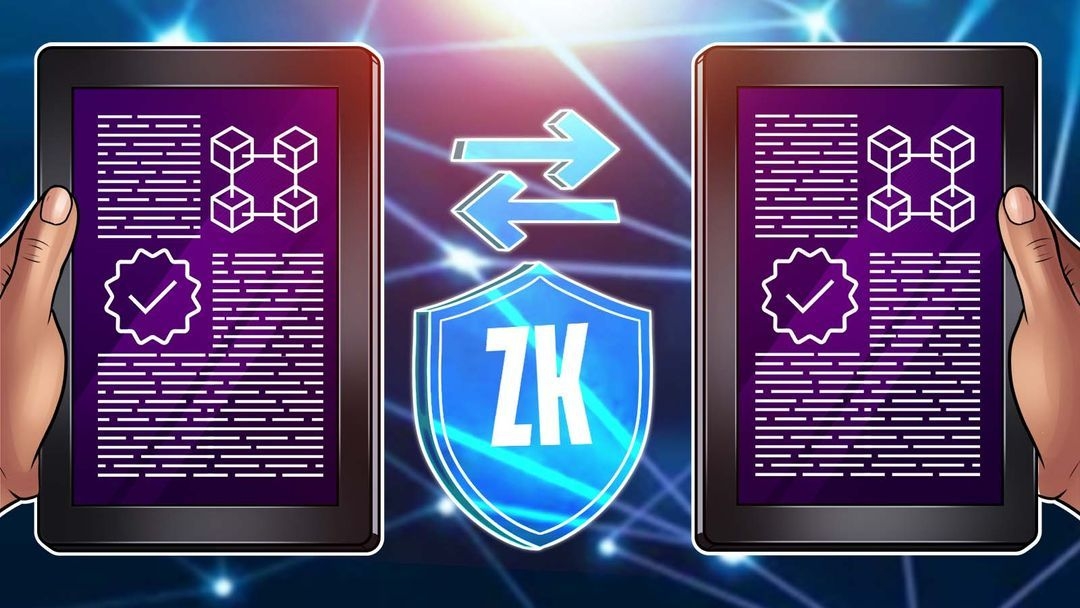zkSync aims to reduce Ethereum's congestion and scale its core values to unleash the full potential of blockchain technology, accelerating the mass adoption of cryptocurrencies. TL;DR:zkSync is a Layer 2 protocol addressing Ethereum's scalability and cost-efficiency challenges.It uses zk-Rollups to merge layer-2 transactions into a single transaction on the Ethereum blockchain.zkSync's Account Abstraction feature allows for converting private accounts into smart contracts, supporting automatic transfers and membership payments.It offers greater scalability and lower transaction costs compared to other solutions like Optimistic Rollup.Challenges include compromised security with consensus mechanisms and the risk of lost transactions.zkSync has had a significant impact on the Ethereum ecosystem, with promising implications for decentralized finance and non-fungible tokens.From Congestion to EfficiencyIn the fast-paced world of blockchain technology, scalability and cost-efficiency have long been among the key challenges inhibiting widespread adoption. Ethereum, the second-largest blockchain platform, has faced inherent congestion due to its ever-increasing popularity. However, the Layer 2 blockchain protocol called zkSync has emerged as a powerful solution to address these limitations, revolutionizing how we conduct transactions on the Ethereum network.zkSync, developed by Matter Labs, is on a mission to propel the mass adoption of cryptocurrencies for personal sovereignty. This innovative Layer 2 protocol not only aims to eliminate Ethereum's congestion but also strives to scale its core values, unlocking the full potential of trustless blockchain technology. In this article, we delve deeper into the transformative capabilities of zkSync, exploring how it makes layer-2 transactions faster and cheaper. Let’s first examine how zkSync works.Working of zkSynczkSync is Matter Labs' first Ethereum Layer 2 product built on the zk Rollups architecture. The zk-Rollup solution facilitates faster validation of Ethereum transactions at a lower cost through layer-2 scalability. Essentially, it fuses a bunch of layer-2 transactions into a single transaction sent on Ethereum's blockchain.In order to validate the correctness of the Rollup block on the main chain, a zero-knowledge proof is constructed - called a SNARK-type zero-knowledge proof. Each transaction verification costs substantially more than SNARK verification, and keeping the state off-chain costs less than storing on EVM. Further, each zkSync transaction has two components that make it cost-efficient:On-chain: The validator must pay Ethereum gas to verify each SNARK in a zkSync block. Depending on the current Ethereum gas price, this fee may vary.Off-chain: Costs associated with storing state and generating a SNARK (zero-knowledge proof).Furthermore, the Account Abstraction (AA) feature of zk-Sync allows users to convert private accounts into smart contracts with their logic by converting Externally Owned Accounts (EOA) into Smart Contract Accounts (CA).This allows one wallet to support and sponsor another by converting other tokens into ETH for fees. Further, users can save time by pooling transactions and signing them all at once rather than processing each transaction individually. Through the AA function, customers can also plan automatic money transfers, renew membership payments, etc.Optimistic rollup projects such as Arbitrum and Optimism, as well as ZK rollup projects like zkSync and Starkware, are all leading open solutions for Ethereum. However, zkSync claims that ZK Rollups are faster than Optimistic because they do not have to wait seven days before verifying the transaction's validity. Additionally, unlike Optimistic Rollup, ZK Rollup does not require a 7-day waiting period for deposits and withdrawals, leading to higher capital efficiency. All these lead to greater scalability and lower transaction costs.Challenges Posed by the Complexity in zkSyncThe security of zkSync's consensus mechanism is compromised by consensus networks, such as practical Byzantine fault tolerance (pBFT) and delegated proof-of-stake (DPoS), that are implemented to speed things up. Although the layer-2 network becomes faster, protocols that increase speed are usually centralized. Further, it is possible for users to send a transaction intended for an exchange to layer 2 if some major wallets and exchanges are not synchronized, which could cause the transaction to be sent to the wrong device. Due to this, transactions can be forever lost, especially if layer-2 networks do not recognize them. In addition, the complexity of general EVM poses a great risk for zkSync because it is still in the early stages of development. In the context of transaction processing, these complexities and the need to generate proof are major challenges. The Broader Implications of zkSyncThe emergence of zkSync as a Layer-2 blockchain protocol has undeniably had a profound impact on the Ethereum ecosystem. From its inception as zkSync 1.0 to its evolution into zkSync 2.0, this innovative solution has showcased continuous growth and improvement, offering faster and cheaper transactions for Ethereum users. However, as we look towards the future, the question arises: are zero-knowledge-proof systems reliable as a long-term utility?Since its introduction in 2019, zkSync has demonstrated resilience and endurance in tackling Ethereum's scalability and congestion issues. Its ability to make transactions more efficient, seamless, and cost-effective has positioned it as a promising solution for the blockchain community. Several decentralized applications (DApps) have already embraced the trustless layer-2 protocol, further validating its effectiveness.While the future of zkSync proofs remains an open question, the overall trajectory and progress of zk-Rollups suggest a positive outlook. Moreover, the broader implications of zkSync extend beyond Ethereum, with the potential to transform various sectors, including decentralized finance and non-fungible tokens.What is zkSync:zkSync is an Ether and ERC20 token transfer layer 2 solutions. The L2 protocol positions itself as an Ethereum scaling and privacy engine. The project is based on a zero-knowledge (ZK) rollup architecture that allows for "unlimited" Ethereum scaling.Learn more about zkSync:Website | Twitter | Discord |
Telegram Source : [Revolutionizing Ethereum: How zkSync is Making Layer-2 ...](news.google.com/rss/articles/CBMib2h0dHBzOi8vd3d3LmJzYy5uZXdzL3Bvc3QvcmV2b2x1dGlvbml6aW5nLWV0aGVyZXVtLWhvdy16a3N5bmMtaXMtbWFraW5nLWxheWVyLTItdHJhbnNhY3Rpb25zLWZhc3Rlci1hbmQtY2hlYXBlctIBAA?oc=5) undefined - BSC NEWS / May 18, 2023
